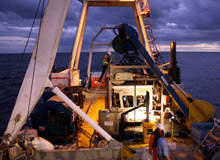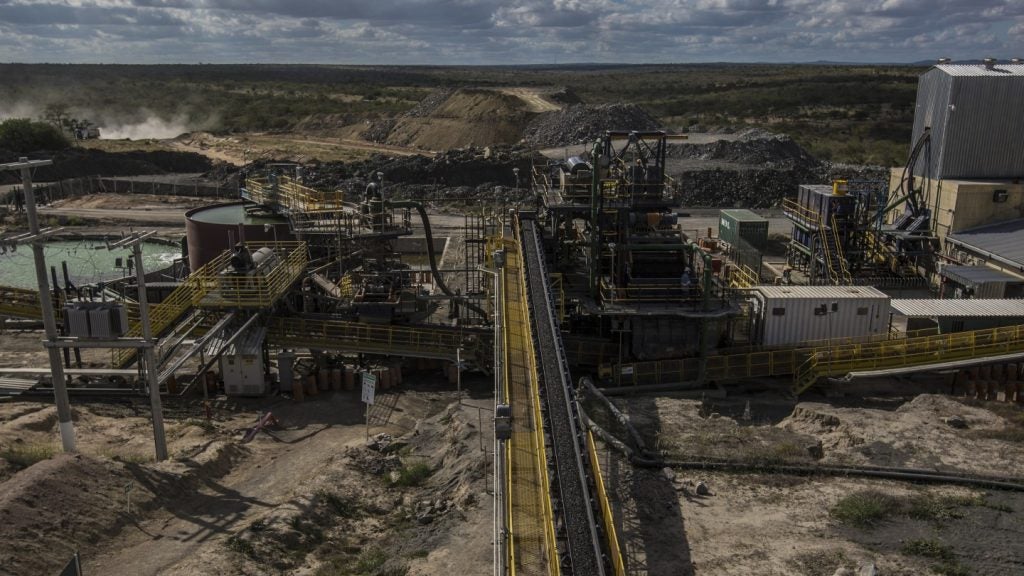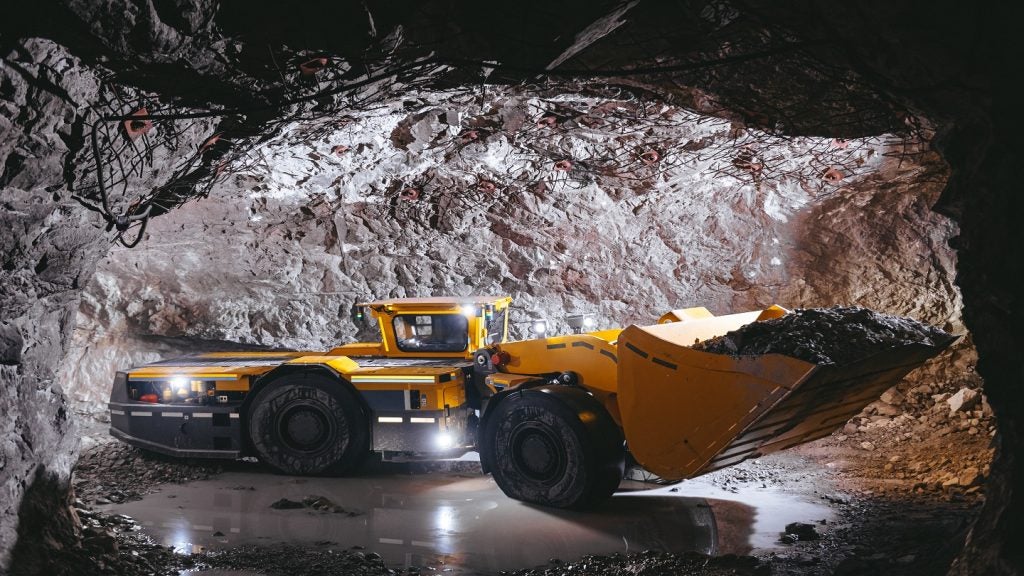
Marine mining has been around for decades, first taking off in the 1960s and 1970s when ocean-floor mining of manganese nodules (containing nickel, copper, and cobalt) became popular. Since then companies have been dredging the sea floor for diamonds, phosphate, sand, aggregate, heavy minerals like titanium and tin. But it’s only been since the turn of the century that deep-sea mining for copper and gold, both contained in a rocky ore deposits called seafloor massive sulphides (SMS), has come into its own.
This new branch of marine mining is being driven by the booming economies of China and India. As their individual populations increase and more people enter the middle class the need for electronics, cars and houses has risen. As a consequence, so too has the need for commodities such as copper and gold. While widely available on land, mining these metals from the sea brings a host of advantages. As the technology has evolved to work in deep-sea environments, a number of mining companies are beginning to explore the possibilities – and reap the benefits – of this new marine mining wave.
Valuable treasure
Located 1-2km underwater, SMS deposits appear like giant rock formations about 200m long and wide, and tens of metres thick. The deposits contain high concentrations of the valuable metals copper and gold, as well as zinc, lead, silver and sulphur. And, the findings can weigh from thousands up to one million tons.
Deposits are found in underwater volcanic areas around the world and are created by hydrothermal plumes known as ‘black smokers’. When seawater seeps through into the porous seabed, the water is heated down below and is then spurted back up into the ocean through the black smokers. The fluids emitted by these deep-sea vents are rich in metals and high in temperature (around 300-500ºC), so when the fluids hit the near-freezing water, the metals precipitate and form chimneys around the plumes. Over time, these chimneys collapse and form the polymetallic sulphide deposits that can be mined today.
Leading the way
There are two major companies paving the way for commercial operations in SMS mining – Nautilus Minerals from Canada and the Australia-based Neptune Minerals. Nautilus’ major project is an SMS mine in Papua New Guinea, called Solwara 1, which is due to begin operations in 2010. The company also has licenses to undertake further exploration PNG, Fiji, Tonga, the Solomon Islands and New Zealand along the western Pacific Ocean’s “ring of fire”.
Neptune’s key project, called Kermadec, is based in the northern waters of New Zealand, the exploration for which began in 2005. Like Nautilus, Neptune has licenses for exploration of SMSs in PNG, the Federated States of Micronesia and Vanuatu. They also have applications for licenses awaiting approval in Italy and Japan.
How well do you really know your competitors?
Access the most comprehensive Company Profiles on the market, powered by GlobalData. Save hours of research. Gain competitive edge.

Thank you!
Your download email will arrive shortly
Not ready to buy yet? Download a free sample
We are confident about the unique quality of our Company Profiles. However, we want you to make the most beneficial decision for your business, so we offer a free sample that you can download by submitting the below form
By GlobalDataBoth companies are focusing their operations on the infamous ‘ring of fire’ – a region known for its seafloor earthquakes and volcanic eruptions but which is also fertile ground for SMS deposits.
Unique technology
Chief operating officer and director of Neptune Minerals, John Feenan, says that a lot of the technology used for SMS mining is based on existing equipment used in the oil and gas sector, with some overlap with marine dredging and offshore diamond mining methods. But the technology is still evolving to suit the unique needs of SMS mining.
The key equipment borrowed from offshore oil and gas relates to seafloor trenching where remotely operated vehicles (ROVs) are used to excavate the seafloor for laying oil and gas pipelines. In SMS mining, similar ROVs are used to cut and lift sections of the deposit, which are then vacuumed and pumped up a flexible pipeline to the vessel at the surface. The only difference in the technology requirements is that while ROVs used for oil and gas pipeline trenches only need to function at depths of less than 500m, ROVs used for SMS mining need to work at 1,500m depths or more.
Although some oil and gas ventures in Brazil and Mexico are drilling at these depths, “these are not familiar areas for sea floor trenching for oil and gas pipelines,” says Feenan.
“But talking to the contractors, they don’t see that as a barrier to developing the right tools to work in those water depths.”
Even though the systems are entirely capable, they may need some tweaking when commercial mining eventually gets underway (Neptune also expects to begin commercialisation of Kermadec by 2010).
“Once these systems are operating, we’ll gather a lot of learning and improve the way they’re implemented and managed, their cost efficiencies and power usage,” says Feenan.
“We’ll also be looking at the environmental impacts of these technologies, such as plume generation.”
Lucrative legislation
There are only four countries that have the legislation to grant licenses for SMS exploration including Japan, PNG, New Zealand and Vanuatu. But as this number expands, so too will the industry – with all the attractions of SMS mining, it’s no wonder.
Feenan says that because SMS deposits are completely exposed on the sea floor as opposed to their land-based counterparts, which have a very high overburden and are very rich in minerals they are easy and economical to mine, with minimal resulting waste.
“Everything we cut and lift will effectively be ore,” he says.
Mobility of the vessel is another advantage. Instead of having to find one large individual deposit of ore body, as with land-based mines, the operation can be moved from deposit to deposit.
Studies have also shown that commercial SMS mining ventures will be lucrative. French engineering firm for the oil and gas industry Technip was contracted by Neptune to investigate the profitability of the company’s operations, and found that Neptune’s SMS deposits had a ground value per ton of $500-$2,000, with operating costs per ton estimated at $145-$162.
Taking operations offshore will also eliminate the disruption to communities that is often a consequence of starting up land-based mines.
But any enterprise dealing with the ‘deep sea’ comes with an overhanging environmental question mark. Neptune are working closely with New Zealand’s National Institute of Water and Atmospheric Research to assess the environmental conditions of the areas it is looking to mine and ensure the impact on ecosystems is minimised. One advantage of Neptune’s work is that they deal with inactive hydrothermal zones – where the black smokers have switched off.
“When those heat systems turn off, the bugs that were living around them migrate to the next hot vent sight. So we won’t be having a significant impact on the type of fauna that grow around these sites,” says Feenan.
It is unlikely that land-based mining for copper and gold will go away, but with 70% of the Earth’s surface located under the sea it is likely to be a very effective supplement.






